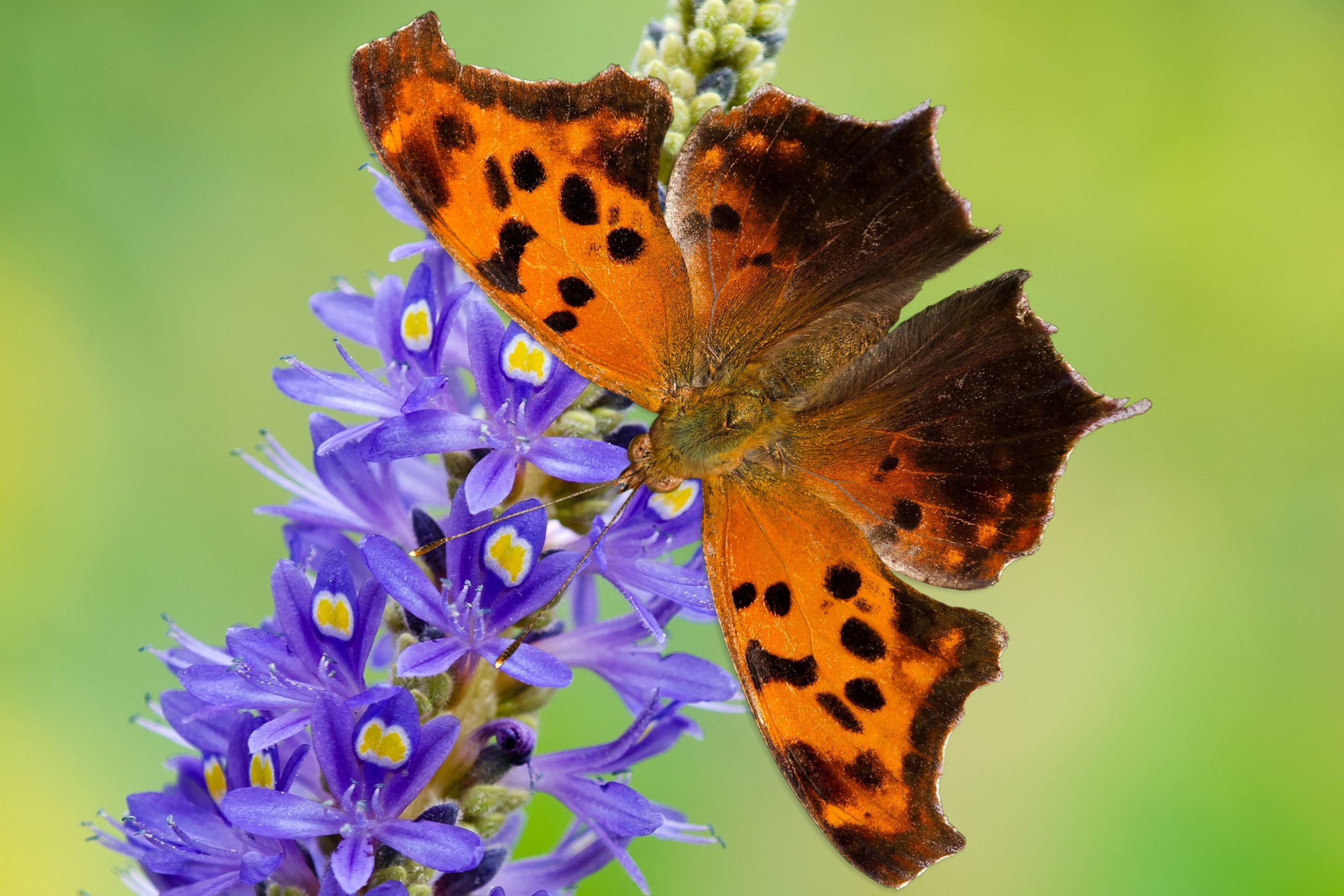Question mark
(Polygonia interrogationis)

Description
Polygonia interrogationis, the question mark, is a North American nymphalid butterfly. It lives in wooded areas, city parks, generally in areas with a combination of trees and open space. The color and textured appearance of the underside of its wings combine to provide camouflage that resembles a dead leaf. The adult butterfly has a wingspan of 4.5–7.6 cm (1.8–3.0 in). Its flight period is from May to September. "The silver mark on the underside of the hindwing is broken into two parts, a curved line and a dot, creating a ?-shaped mark that gives the species its common name. Like other species in the order of Lepidoptera, the question mark is an insect that undergoes four life stages, also known as holometabolis or complete metamorphosis. These four life stages are embryo (ova or egg), larva (in this case, caterpillar), pupa (chrysalis), and imago, (or adult/ butterfly). After the male has found the female perching on a tree or in the grass, courting ensues, after which the mating of the two occurs. Females lay eggs singly or stacked under leaves of plants that are usually not the hosts. The young hatchlings must then find their food source to survive. Larvae of the question mark butterfly, like all lepidopteran larvae, mature through a series of stages called instars. Near the end of each instar, the larva undergoes a process called apolysis, in which the cuticle, a tough outer layer made of a mixture of chitin and specialized proteins, is released from the softer epidermis beneath, and the epidermis begins to form a new cuticle beneath. At the end of each instar, the larva moults the old cuticle, and the new cuticle expands, before rapidly hardening and developing pigment. Development of butterfly wing patterns begins by the last larval instar. Unlike some caterpillars, larvae of this beautiful butterfly feed on a variety of host plants. American elm (Ulmus americanus), red elm (Ulmus rubra), hackberry (Celtis), Japanese hop (Humulus japonicus), nettles (Urtica), and false nettle (Boehmeria cylindrica) are the main ones listed. Once the larvae have undergone their last instar, the caterpillars pupate in a chrysalis. Unlike many moths, which build cocoons to pupate in, the majority of butterfly pupae are "naked", meaning without the protection of the earth or a cocoon to protect them.
Taxonomic tree:







